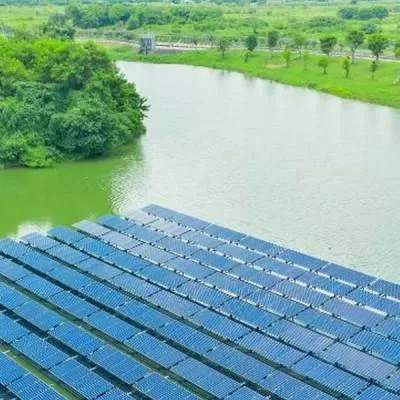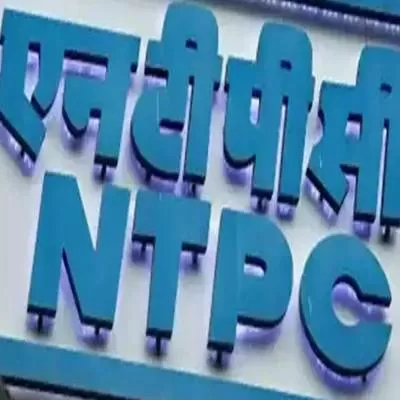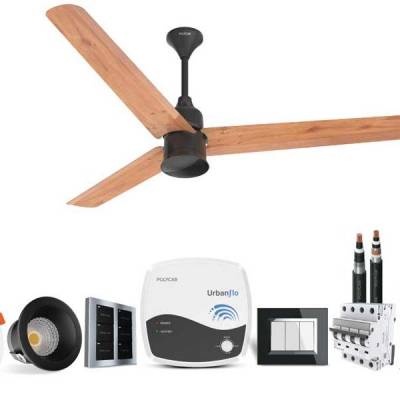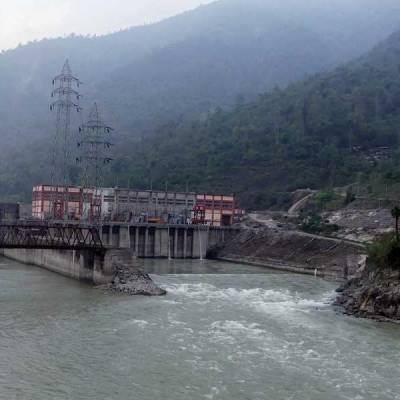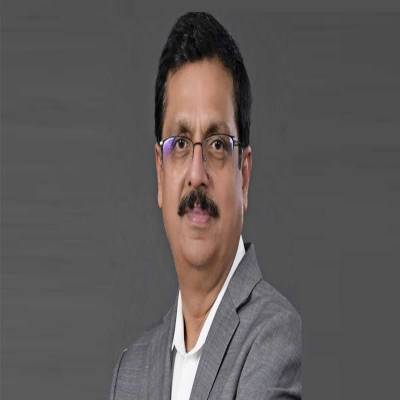Power Up
On site
The hydel power project involved the construction of a concrete gravity dam, diversion tunnel, head race tunnel, surge shaft, pressure shaft, powerhouse complex and tail race tunnel. For the construction of the concrete dam, a diversion tunnel with 8.8 m diameter and 337 m in length was built to channel the water of the Jhelum River. Work on this segment was completed on January 11, 2007. The total catchment area of the dam site is 13,400 sq km and the concrete gravity dam is about 52 m in height and 157 m in length. Apart from this, the project's head race tunnel is 4.23 km in length and 8.4 m in diameter. Other structures include a restricted orifice type surge shaft of 25 m diameter and a 3.61-km tail race tunnel. The project also includes four spillways of 9 m each in the dam to divert water to the tunnel for power generation. The underground powerhouse, 133 m in length, 15 m in width and 40 m in height, accommodates four turbines, each with a capacity of 60 MW.
The geology
The Uri-II project lies in the eastern part of the Kashmir syntaxial bend of the Northwest Himalayas and is occupied by quaternary deposits and sedimentary rocks of upper Murree Formation. The company's project team carried out in-depth investigations to ensure successful construction in these harsh conditions. Safety measures in the form of rock support through methods such as wire mesh, shotcrete, steel rib, rock bolt and rock anchor were used. The project team completed the dam structure with a total concrete quantity of 1 lakh cu m.
Tunnelling
While excavating the headrace tunnel, the rock class encountered was of class 3 and 4; the tailrace tunnel engineers encountered riverine materials for a length of 223 m. This consisted of earth mixed with boulders, together with heavy seepage of about 15,000 litre per minute. To excavate in these very loose earth strata, exposed boulders on the face were removed by blasting and the earth surrounding them was removed using excavators. Then, shotcrete and consolidation grouting were carried out to stabilise the tunnel face and dewatering pumps were deployed to a capacity of 600 hp in stages to tackle seepage. To avoid loose fall from the crown of the tunnel, specialised pipe roofing using Mai anchors was installed as an umbrella. Advancement of the tunnel wascarried out cautiously to avoid any mishap with rib support and back fill concreting, the entire stretch of the tail race tunnel was lined with reinforced concrete.
Dewatering
In the tail race tunnel, power house and dam area, the seepage encountered was huge as the nallahs crossing over the TRT alignment and the crown of the underground powerhouse were designed 22 m below the river water level. The project team ensured uninterrupted dewatering in the TRT, powerhouse and dam area till the project was completed. The total dewatering quantity in this project was 345 million kW hours and the total electrical cables used to maintain this dewatering arrangement in tunnels was 15,000 m.
The challenges
Owing to the Indus Water Treaty agreement between India and Pakistan, the reservoir had to be impounded before August 20, 2011. Following this, the project team had to complete the apron structure of the dam within 25 days.
'To construct this apron, we had to excavate the foundation at EL 1,196 m and the excavated muck had to be disposed at EL 1,220 m, with the level difference of 24 m, in the absence of haul roads and with limited space,' shares R Rajendrakumar, Project Manager, HCC. 'We deployed seven excavators to complete the work.'
Another major challenge was seepage from the downstream coffer-dam. The team deployed 20 units of 50 hp capacity dewatering pumps, each with a discharge capacity of 6,000 litre per minute. Each pump was run continuously for 25 days to avoid obstruction during construction of the apron. The team completed the construction and the reservoir was impounded during the first week of August 2011.
It also encountered hurdles during excavation of the tail race tunnel through Adit-IV upstream and downstream in the monsoon season. It was evident from the construction drawings that the bottom level of the tunnel would be lower than the river bed level. However, all these factors were overcome and the major works for commissioning of the project was done.
Time for power
The project is substantially complete and finishing work is in progress. Mechanical spinning of all the four power turbine units was executed in March 2013 and the Uri-II project will soon be operational.
PROJECT DETAILS
Contractor: HCC. Tel: 022-2575 1000.
Website: www.hccindia.comClient: National Hydroelectric Power Corporation.
Fax: 0129-227 7941.
Website: www.nhpcindia.com
Capacity: 240 MW (4 x 60 MW)
Major equipment suppliers: Atlas
Copco, CIFA, Liugong, Merlo, IPS
Eurotec, Schwing Stetter, Tata, Shirke
Potain, Larsen & Toubro, JCB, Mitsui,
Ajax Fiori etc.
Components Description
Diversion Tunnel - 337 m in length, 8.8 m diameter, horseshoe shaped. Dam - Concrete gravity dam, maximum height 43.7 m, 157 m in length. Spillway 60 m wide, 4 bays each of 9 m width, orifice type with breast wall. Head race tunnel Horseshoe shaped, 4.23 km in length, 8.4 m in diameter, concrete lined.
Surge shaft Open to air, restricted orifice type, 78 m in height, 25 m in diameter Pressure shaft or penstock - 2 nos, underground, circular steel-lined, 5 m (internal) diameter, length from surge shaft to MIV is 170/188, length from MIV to PH 34.5 m each.
Power House Underground, powerhouse cavern 133 m + 15 m + 40 m, transformer or GIS cavern 170.5 m + 14 m + 13 m, gross head 130 m, net operating head 118 m, design discharge 225 cu m per sec, 4 draft tube gates.
To provide support to India's northern grid, Hindustan Construction Company (HCC) has created the 240 MW Uri-II hydel power project. The project is a run-of-the-river scheme for the National Hydroelectric Power Corporation (NHPC) on the Jhelum River in the Uri area of Baramullah district in Northern Kashmir and is expected to generate 1,123 million electricity units annually. Uri-II will not only make the state independent in terms of power but also lend power to other northern states such as Uttarakhand, Uttar Pradesh, Haryana, Delhi, Punjab, Rajasthan and Chandigarh. The project was bagged by HCC in 2005; however, owing to an earthquake, initial mobilisation was delayed by six months. On site The hydel power project involved the construction of a concrete gravity dam, diversion tunnel, head race tunnel, surge shaft, pressure shaft, powerhouse complex and tail race tunnel. For the construction of the concrete dam, a diversion tunnel with 8.8 m diameter and 337 m in length was built to channel the water of the Jhelum River. Work on this segment was completed on January 11, 2007. The total catchment area of the dam site is 13,400 sq km and the concrete gravity dam is about 52 m in height and 157 m in length. Apart from this, the project's head race tunnel is 4.23 km in length and 8.4 m in diameter. Other structures include a restricted orifice type surge shaft of 25 m diameter and a 3.61-km tail race tunnel. The project also includes four spillways of 9 m each in the dam to divert water to the tunnel for power generation. The underground powerhouse, 133 m in length, 15 m in width and 40 m in height, accommodates four turbines, each with a capacity of 60 MW. The geology The Uri-II project lies in the eastern part of the Kashmir syntaxial bend of the Northwest Himalayas and is occupied by quaternary deposits and sedimentary rocks of upper Murree Formation. The company's project team carried out in-depth investigations to ensure successful construction in these harsh conditions. Safety measures in the form of rock support through methods such as wire mesh, shotcrete, steel rib, rock bolt and rock anchor were used. The project team completed the dam structure with a total concrete quantity of 1 lakh cu m. Tunnelling While excavating the headrace tunnel, the rock class encountered was of class 3 and 4; the tailrace tunnel engineers encountered riverine materials for a length of 223 m. This consisted of earth mixed with boulders, together with heavy seepage of about 15,000 litre per minute. To excavate in these very loose earth strata, exposed boulders on the face were removed by blasting and the earth surrounding them was removed using excavators. Then, shotcrete and consolidation grouting were carried out to stabilise the tunnel face and dewatering pumps were deployed to a capacity of 600 hp in stages to tackle seepage. To avoid loose fall from the crown of the tunnel, specialised pipe roofing using Mai anchors was installed as an umbrella. Advancement of the tunnel wascarried out cautiously to avoid any mishap with rib support and back fill concreting, the entire stretch of the tail race tunnel was lined with reinforced concrete. Dewatering In the tail race tunnel, power house and dam area, the seepage encountered was huge as the nallahs crossing over the TRT alignment and the crown of the underground powerhouse were designed 22 m below the river water level. The project team ensured uninterrupted dewatering in the TRT, powerhouse and dam area till the project was completed. The total dewatering quantity in this project was 345 million kW hours and the total electrical cables used to maintain this dewatering arrangement in tunnels was 15,000 m. The challenges Owing to the Indus Water Treaty agreement between India and Pakistan, the reservoir had to be impounded before August 20, 2011. Following this, the project team had to complete the apron structure of the dam within 25 days. 'To construct this apron, we had to excavate the foundation at EL 1,196 m and the excavated muck had to be disposed at EL 1,220 m, with the level difference of 24 m, in the absence of haul roads and with limited space,' shares R Rajendrakumar, Project Manager, HCC. 'We deployed seven excavators to complete the work.' Another major challenge was seepage from the downstream coffer-dam. The team deployed 20 units of 50 hp capacity dewatering pumps, each with a discharge capacity of 6,000 litre per minute. Each pump was run continuously for 25 days to avoid obstruction during construction of the apron. The team completed the construction and the reservoir was impounded during the first week of August 2011. It also encountered hurdles during excavation of the tail race tunnel through Adit-IV upstream and downstream in the monsoon season. It was evident from the construction drawings that the bottom level of the tunnel would be lower than the river bed level. However, all these factors were overcome and the major works for commissioning of the project was done. Time for power The project is substantially complete and finishing work is in progress. Mechanical spinning of all the four power turbine units was executed in March 2013 and the Uri-II project will soon be operational. PROJECT DETAILS Contractor: HCC. Tel: 022-2575 1000. Website: www.hccindia.comClient: National Hydroelectric Power Corporation. Fax: 0129-227 7941. Website: www.nhpcindia.com Capacity: 240 MW (4 x 60 MW) Major equipment suppliers: Atlas Copco, CIFA, Liugong, Merlo, IPS Eurotec, Schwing Stetter, Tata, Shirke Potain, Larsen & Toubro, JCB, Mitsui, Ajax Fiori etc. Components Description Diversion Tunnel - 337 m in length, 8.8 m diameter, horseshoe shaped. Dam - Concrete gravity dam, maximum height 43.7 m, 157 m in length. Spillway 60 m wide, 4 bays each of 9 m width, orifice type with breast wall. Head race tunnel Horseshoe shaped, 4.23 km in length, 8.4 m in diameter, concrete lined. Surge shaft Open to air, restricted orifice type, 78 m in height, 25 m in diameter Pressure shaft or penstock - 2 nos, underground, circular steel-lined, 5 m (internal) diameter, length from surge shaft to MIV is 170/188, length from MIV to PH 34.5 m each. Power House Underground, powerhouse cavern 133 m + 15 m + 40 m, transformer or GIS cavern 170.5 m + 14 m + 13 m, gross head 130 m, net operating head 118 m, design discharge 225 cu m per sec, 4 draft tube gates.



